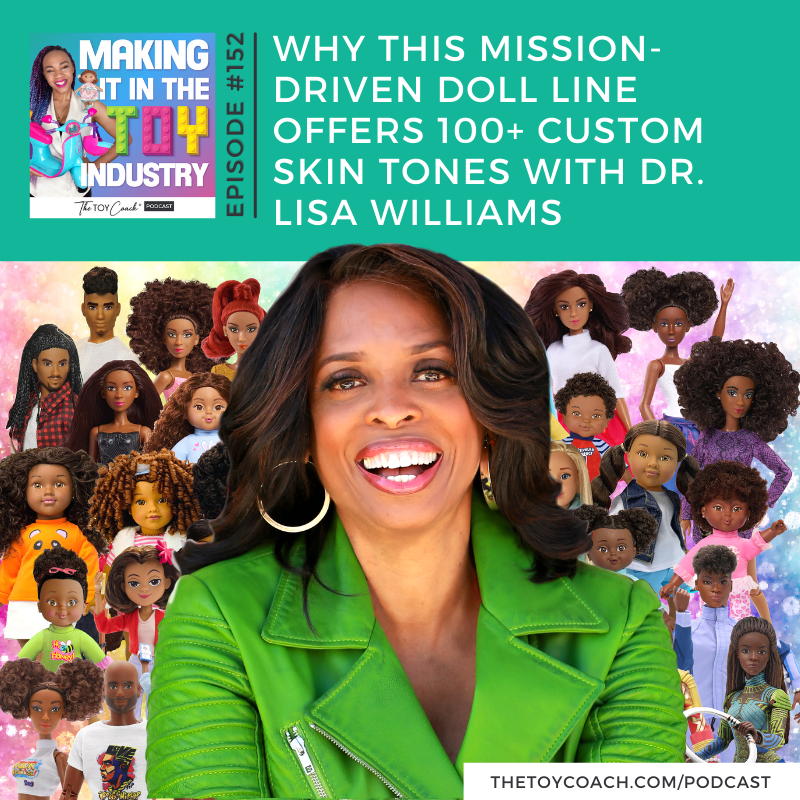Stopping Toy Industry Racial Bias in its Tracks
I am a black woman. This fact has shaped my experience in the toy industry from day one. I have encountered too many uncomfortable situations relating to race that I have had to bite my tongue and deal with. Many of them were related to toys and toy design, but I’ve ever dealt with inappropriate comments about my hair, and people telling me how they are so proud that they are not afraid of black men.
I've had to deal with racial bias in the toy industry and hide my feelings around unfair practices to get where I am today. But that ends now.
I can remember, at the beginning of my career, I believed it when people told me that dolls of color just don’t sell as well as white, blonde dolls. I was told that covers and ads for toy lines had to have a certain ratio of white models to models of color, and I went with it. However, at a certain point, I had to examine my own thoughts and came to the conclusion that I was done supporting these ideals.
Now my goal is to choose models based on what we need for the project - not on race. I want to create doll lines with multiple skin tones, and instruction manuals that have hands of people of color.
The work we do in the toy industry impacts how the children in our society think and act in the world. We have a bigger impact when we choose models for a box or skin tones of a doll than I think we realize.
Do you want to help end racial bias in the toy industry? Great.
I've got 5 ideas on how you can start.
1. Ask “Why?”
When a higher up suggests your line doesn’t actually need more diversity, and only wants to include white dolls, or white models, ask why. This may expose their prejudice to you, which is always good to know about. It may inform you how long you’d like to work at a company. However, it may also expose their prejudice to themselves, which is the first step to undoing the type of thinking many have subconsciously adopted that led them to have those thoughts
2. Pitch Diversity
Don’t be afraid to do something outside of the norm. How will we get diverse products and images out there if no one ever takes a chance? Pitch dolls of color in multiple shades. Pitch a photoshoot that actually has more dark-skinned models than light-skinned ones. Pitch a children’s book or show with a cast of more POC than not. Create the main characters who are not white. Don’t make white the default in your creative choices. And, if your pitches aren’t getting accepted, keep making them until they are.
3. Ask for Proof
The numbers don’t lie. When managers and higher-ups tell you that light-skinned dolls sell better than dark-skinned ones, or try to push dolls of color out of the mainstream for “numbers” reasons, ask for proof. Studies show that what sells best is what is at a consumer’s eye level, so higher-ups are creating a self-fulfilling prophecy by pushing dark-skinned products to the edges of displays.
4. Analyze Your Feelings + Take Action
I want you to know it's OK to feel uncomfortable talking about racial bias and discrimination. But it's not OK to continue to let it happen. This stuff is uncomfortable. It’s hard, confusing, and frustrating. For people of all races. But feeling uncomfortable is how we get progress. Analyze your uncomfortableness and find out where it is coming from. Figure out how to deal with your frustration in a way that will drive positive change in the world.
5. Fight Against Industry Standards
When I learned that EA stands for ethnically ambiguous, it didn’t sit right with me. It felt like it was sending a subtle message about race - that there are only two races - white people and everyone else. I’ve also been told to lighten the skin of both dark and light-skinned dolls of color. If you want to fight racism in the toy industry, you must fight against these common practices.
Playtime creates long-lasting impressions in young minds. These kids are going to be the leaders of the future. Because of that, I believe that we have a social responsibility to provide them with diverse toy options that represent their entire communities.
Are you open to learning more about racial bias in the toy industry and how you can affect change?
Listen and share this podcast episode The Ripple Effect of Racial Bias in The Toy Industry.










